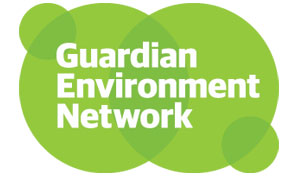In Your Home – Conserve Energy
| In Your Home – Reduce Toxicity
| In Your Office
| Ways to Use Less Water
|

Custom Search
Sabtu, 29 November 2008
100 Topic Sustainable Environmental
Kamis, 27 November 2008
Sanitation is vital for health
 Readers of a prestigious medical journal were recently asked to name the greatest medical advance in the last century and a half. The result: better sanitation. In nineteenth-century Europe and North America, diarrhoea, cholera, and typhoid spread through poor sanitation was the leading cause of childhood illness and death; today, such deaths are rare in these regions. In developing countries, however, they are all too common, and recent research suggests that poor sanitation and hygiene are either the chief or the underlying cause in over half of the annual 10 million child deaths. Compelling, evidence-based analysis shows that hygiene and sanitation are among the most cost-effective public health interventions to reduce childhood mortality. Access to a toilet alone can reduce child diarrhoeal deaths by over 30 percent, and hand-washing by more than 40 percent.
Readers of a prestigious medical journal were recently asked to name the greatest medical advance in the last century and a half. The result: better sanitation. In nineteenth-century Europe and North America, diarrhoea, cholera, and typhoid spread through poor sanitation was the leading cause of childhood illness and death; today, such deaths are rare in these regions. In developing countries, however, they are all too common, and recent research suggests that poor sanitation and hygiene are either the chief or the underlying cause in over half of the annual 10 million child deaths. Compelling, evidence-based analysis shows that hygiene and sanitation are among the most cost-effective public health interventions to reduce childhood mortality. Access to a toilet alone can reduce child diarrhoeal deaths by over 30 percent, and hand-washing by more than 40 percent.Diarrhoeal diseases
Five thousand children die every day due to infectious diarrhoea, which is caused primarily by inadequate sanitation. Seventeen percent of under-five deaths are attributable to diarrhoeal diseases, making it the second largest killer of children, after pneumonia. Diarrhoea is also a major contributor to malnutrition and stunting.
Diarrhoeal diseases are often described as water-related, but more accurately should be known as excreta-related since the pathogens derive from faecal matter. The faecal-oral cycle« describes the principal routes of transmission of infectious diarrhoeal disease. This cycle is fuelled by the ive f’s fluid (drinking contaminated water); fields (the contamination of soil and crops with human faecal matter); fingers (unwashed hands preparing food or going into the mouth); food (eating contaminated food); and flies (spreading disease from faeces to food and water or directly to people – particularly problematic where open-air defecation is the norm).

Breaking the faecal-oral cycle, which depends primarily upon hand-washing and use of toilets or latrines that contain and sanitise faecal matter, saves children’s lives. In Salvador, Brazil, a recent city-wide sanitation drive has raised sanitation coverage rates from 26 percent to 80 percent.
A study on diarrhoeal morbidity in children under three was conducted in high and low-risk areas of the city. The overall prevalence of diarrhoea fell by 22 percent, but in the poorer areas where sanitation coverage was lowest to start with, prevalence fell by 43 percent.
source : http://esa.un.org
Langganan:
Komentar (Atom)
|

Jl. Lada VI no.49, Perumnas Way Halim, Bandar Lampung (35141), Lampung-INDONESIA Telp.62-0721-785755
 Unplug seldom used appliances.
Unplug seldom used appliances. Eliminate mercury from your home by purchasing items without mercury, and dispose of items containing mercury at an appropriate drop-off facility when necessary (e.g. old thermometers).
Eliminate mercury from your home by purchasing items without mercury, and dispose of items containing mercury at an appropriate drop-off facility when necessary (e.g. old thermometers).  Learn about alternatives to household cleaning items that do not use hazardous chemicals.
Learn about alternatives to household cleaning items that do not use hazardous chemicals.  Use an electric lawn- mower instead of a gas-powered one.
Use an electric lawn- mower instead of a gas-powered one.  Rent or borrow items like ladders, chain saws, party decorations and others that are seldom used.
Rent or borrow items like ladders, chain saws, party decorations and others that are seldom used.  Set up a bulletin board for memos instead of sending a copy to each employee.
Set up a bulletin board for memos instead of sending a copy to each employee.  Report smoking vehicles to your local air agency.
Report smoking vehicles to your local air agency.  Ignite charcoal barbecues with an electric probe or other alternative to lighter fluid.
Ignite charcoal barbecues with an electric probe or other alternative to lighter fluid.  Install water-saving devices on your faucets and toilets.
Install water-saving devices on your faucets and toilets.  Shop with a canvas bag instead of using paper and plastic bags.
Shop with a canvas bag instead of using paper and plastic bags. 






